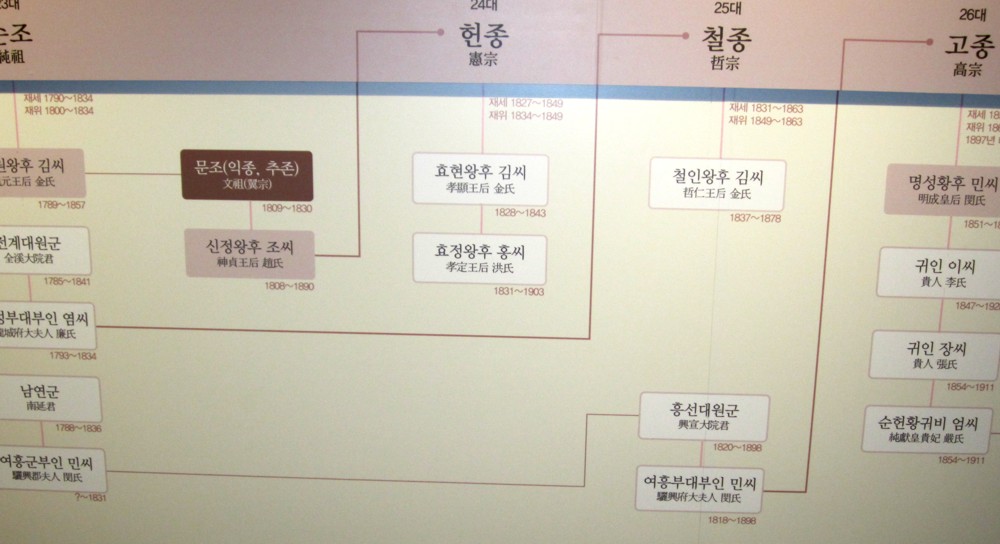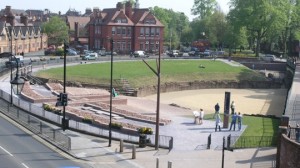This week, my wife and I are in South Korea to visit family.
I have noticed when visiting museums that I am often able to use math to make sense of information that is presented in Korean, a language I don’t speak.
For example, we visited Gyeongbokgung, the Korean royal palace from the 14th Century, in Seoul. In the museum next to the palace grounds was a large wall chart in Korean, showing the Royal family tree up to 1910, when Japan annexed Korea and the royal family was dissolved. Look at this section (click for a larger image):

Korean Royal Family Tree 1790-1863
Unless you read Korean script, at first glance this will appear almost unintelligible. But with a little deduction, there is actually a lot of information which may be gleaned from the chart.
Click the photo above for a larger image. Each box has a pair of dates under it, noting the years of birth and death of that person. What can you learn about the Korean royal family in the 19th Century? The detail that is available to us using quite elementary math is surprising.

The study of history gives an excellent opportunity to put to use mathematics skills to learn more about the people being studied. Here are just a few pieces of information deduced merely from the dates provided and the graphical layout of the information:
- Looking down the left-hand vertical column, birth dates are 1790 (the King), 1789, 1785, 1793, 1788. These people were thus of the same generation, since their birth dates were only a few years apart.
- The six people in the left-hand column are in pairs, and each pair is linked by a line to an individual in a column to the right – obviously a couple’s child.
- The person represented by the dark brown box was born when his parents were 19 and 20 years old, married someone approximately a year older, and they had a child when they were 18 and 19 years old.
- The child became the 24th king at age 7, and reigned until the age of 22. In fact, the throne had skipped a generation, and the 24th king took the throne in the place of his grandfather, his father having already passed away 4 years earlier. His mother, on the other hand, outlived the king by 41 years. His grandmother also outlived him, and was 45 years old when he took the throne.
I wrote previously about using math in a visit to a graveyard to learn about the history of the people interred there. It is quite amazing how much one can learn using math in a similar context, even when the rest of the text is in a foreign language!
If you would like to use other photos from this museum to give students an experience of finding information using math, download the accompanying zip file containing 5 photos:
How do you use math in history classes? Feel free to leave a comment below.

